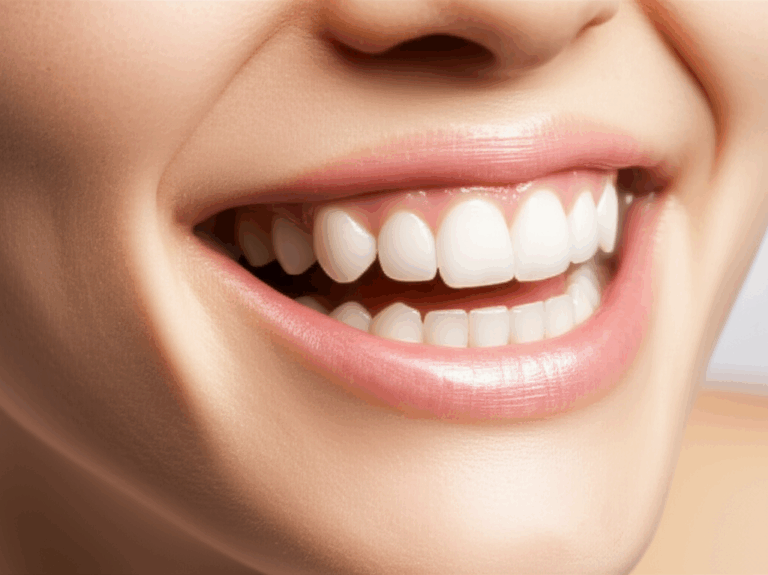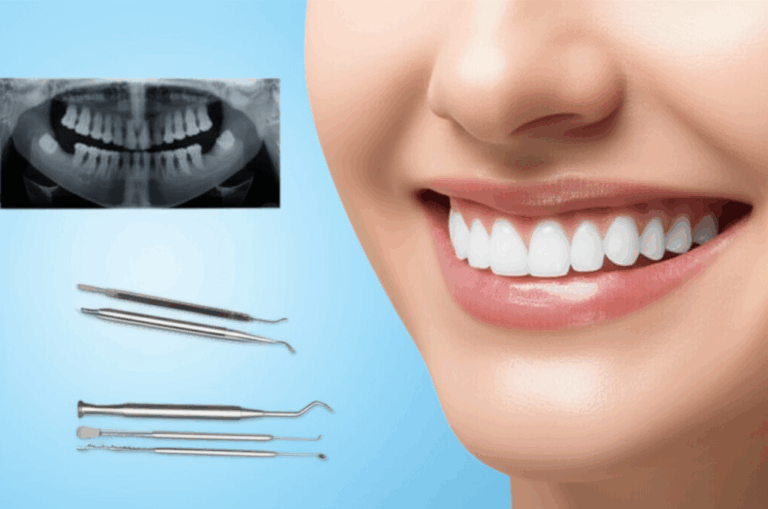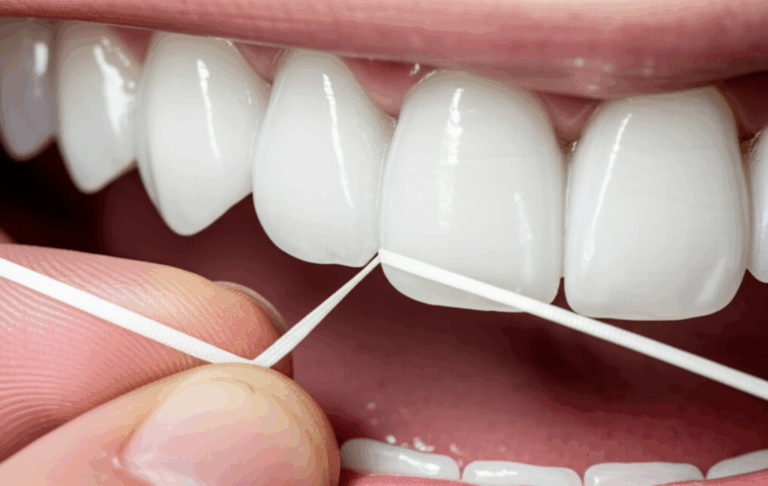
Can You Go to the Emergency Room for Dental Problems? When to Seek ER Care vs. Urgent Dental Care
Have you ever woken up with a painful, pulsing tooth or a swollen face and wondered, “Should I go to the emergency room for this?” This article is for you! You’ll learn exactly when dental pain is a real emergency, what the ER can (and can’t) do for your teeth, how to find faster and better care, and some easy tips to avoid scary tooth problems in the first place. You’ll also see why knowing the difference between urgent dental care and an actual emergency could save you time, money, and maybe even your health. Read on to become the person your family turns to for dental emergencies!
Table of Contents
- What Are Dental Emergencies?
- When Should You Go to the ER for a Dental Problem?
- When Is the Dentist or Urgent Dental Care the Better Choice?
- What Can (and Can’t) the Emergency Room Do for Dental Problems?
- How Does an ER Visit for Dental Trouble Usually Go?
- Are There Other Places for Dental Emergencies?
- What Does It Cost to Go to the ER vs. a Dental Office?
- How Can You Prevent Dental Emergencies?
- What to Do for Dental Pain While You Wait for Care
- FAQs: Common Questions About Dental Emergencies
- Summary: The Most Important Things to Remember
What Are Dental Emergencies?
Let’s start simple. Not everything that hurts in your mouth is a “dental emergency.” A dental emergency is something that needs help right away to stop problems that could be deadly or to save a tooth. Experts, like the American Dental Association, explain a true emergency could involve:
- Heavy, unstoppable bleeding
- Large or fast-growing swelling (often from infection) making it hard to breathe or swallow
- Broken jaw or a seriously injured face
- Knocked-out tooth (also called “avulsion”), especially in a child
- Very bad pain plus fever, confusion, or spreading redness
- Signs of infection: cellulitis, “Ludwig’s Angina,” or abscess
- Injury from sports or accidents
Everyday aches, sore gums, or a chipped tooth usually aren’t emergencies—but they still need care! If you’re not sure, keep reading. Knowing the signs now can help you stay calm (and save money) later.
When Should You Go to the ER for a Dental Problem?
Here’s the thing. Most dental emergencies DON’T belong in the ER. But sometimes—especially at night or on weekends—it’s your only choice. Here’s when the emergency room really is the right place:
Signs You Need the ER NOW
- Bad facial swelling: If your face gets bigger fast, or you can’t swallow or breathe well, go now! This could mean a spreading infection like cellulitis or Ludwig’s Angina, and you need help right away.
- Bleeding you can’t stop: Did you get hurt or have a tooth pulled and the bleeding won’t quit, even when you press on it? Time to go.
- If you think your jaw is broken: If you can’t close your mouth, your bite feels weird, or your jaw moves strangely after an injury.
- Knocked-out permanent tooth: While your dentist is better, the ER can help guide you if one isn’t available. Quick tip: Keep the tooth wet in milk and get help fast!
- Bad injuries to the face: Accidents, falls, or sports injuries that broke bones or caused big cuts.
- Pain you can’t stand along with other signs: If the pain is joined by fever, chills, fast swelling, or confusion, the infection may be spreading through your body. Don’t wait!
Table: Quick Guide — When ER Is Needed
| Symptom | Go to ER? |
| Can’t breathe/swallow | YES |
| Face swelling grows quickly | YES |
| Can’t stop the bleeding | YES |
| Suspect jaw is broken | YES |
| Knocked-out tooth (permanent) | YES/Maybe (if dentist unavailable) |
| Toothache only | NO, see dentist |
| Sore or bleeding gums | NO, see dentist |
When Is the Dentist or Urgent Dental Care the Better Choice?
Most tooth troubles can wait to see a dentist–even if it hurts or you’re worried. Do you have any of these problems?
- A light or constant toothache
- Lost filling or crown
- A chipped or cracked tooth (if it doesn’t hurt badly)
- Minor gum swelling or gums that bleed when brushing
- Cold sensitivity, food caught between teeth, or a dull ache
- Broken denture or retainer problems
These are all best handled by a dentist or at an emergency dental clinic.
Here’s how I learned this the hard way: Last year, I chipped a tooth eating popcorn—ouch! It looked bad but didn’t hurt that much. My first thought? “Should I go to the ER?” Luckily, I waited and called my dentist. They saw me the next day and fixed it in thirty minutes. If I’d gone to the ER, I’d have waited hours, paid three times as much, and still needed a dentist the next day.
Instead, try to call your regular dentist. Many have after-hours phone lines or work with local urgent dental clinics for emergencies.
What Can (and Can’t) the Emergency Room Do for Dental Problems?
It’s a common mistake. You might think, “If I go to the hospital, they’ll just fix my tooth, right?” Not quite! Here’s what the ER team can – and can’t – do:
What the ER CAN Do:
- Handle problems that could be deadly: Make sure you can breathe, stop heavy bleeding, check for broken bones.
- Give you medicine for an infection if you have one that’s spreading.
- Give you pain medicine for relief if nothing else works.
- Take pictures (like X-rays or CT scans) to check for jaw fractures, abscesses, or major injury.
- Send you to a dentist or oral surgeon to follow up.
- Give basic first aid, like draining an abscess if needed.
What the ER CANNOT Do:
- Fill cavities
- Fix a broken crown or bridge
- Replace a knocked-out baby tooth
- Do cleanings or root canals
- Offer fixes that last for dental pain
In other words, they’ll fix the immediate danger and send you on to a dental pro. After your visit, you’ll still need an experienced dental lab or clinic to get a full repair and lasting care.
How Does an ER Visit for Dental Trouble Usually Go?
Let’s walk through what actually happens if you show up at the emergency room with a toothache or mouth pain.
Step 1: A nurse checks to see how serious your problem is. If you can’t breathe, you go first. If it’s just pain, you may wait a long time.
Step 2: The doctor checks your mouth and face. They look for swelling, signs of infection, broken bones, abscesses, or heavy bleeding. They might take an X-ray or CT scan.
Step 3: If you have an infection or bad pain, you’ll get antibiotics, pain relievers like acetaminophen or ibuprofen, and instructions to see a dentist as soon as possible.
Step 4: Sometimes, if the swelling is life-threatening, they may drain an abscess or keep you in the hospital for medicine given through a tube (an IV).
When you leave the ER, you’ll almost always need to book a dentist visit right away to truly fix the problem. So if you have pain or break a crown, visiting your local dental ceramics lab or dentist is usually faster – and way cheaper.
Are There Other Places for Dental Emergencies?
Absolutely! Here’s where you’ll often find fast, expert help:
- Your regular dentist: Call during office hours or check their voicemail for emergency numbers.
- Emergency dental clinics: Many cities have urgent care dental offices open after hours and on weekends.
- Dental schools: If you live near a university, their clinics can offer emergency care at lower costs.
- Walk-in dental clinics: Some offer same-day care for accidents, pain, or lost fillings.
For example, many China dental labs and clinics have special hours for walk-in patients—this gets you the right treatment in the shortest time!
If you’re ever unsure, check online reviews or call ahead. You’ll also want to ask about insurance, costs, and what kinds of emergencies they treat.
What Does It Cost to Go to the ER vs. a Dental Office?
This is a big one, especially if you’re worried about money or don’t have insurance.
Emergency Room Cost:
- ER visits are usually MUCH more expensive than seeing a dentist.
- A typical ER charge just to walk in: $500–$1000 or more.
- Insurance often won’t cover much if it’s not life-threatening.
- They charge extra for X-rays, scans, labs, or IVs.
Dental Office/Urgent Dental Clinic Cost:
- First visits usually run $50–$200.
- Treatments like fillings, extractions, or relief plans cost less than the ER.
- Dental emergency plans or dental insurance usually help cover the visit.
| ER Visit | Dental Clinic | |
| Cost | $500–$2,000+ | $50–$400+ |
| Wait time | 1–8 hours | <1 hour–same day |
| Can fix problem? | NO | YES |
| Insurance coverage | Low/unlikely | Common |
Long story short: Only use the ER if truly needed, or you’ll pay more, wait longer, and still need a real dental fix.
How Can You Prevent Dental Emergencies?
Nobody wants a surprise trip to the ER—or a big dental bill. Here are the best ways to keep your teeth healthy and emergencies away:
- Brush and floss every day.
- See your dentist for regular check-ups.
- Wear a mouthguard during sports or if you grind your teeth at night.
- Don’t chew ice, hard candy, or other tough things.
- Pay attention to warning signs—like dull pain, loose teeth, or bleeding gums—and get them checked early.
- If you have things like retainers or dentures, keep them clean and check them often.
You can find lots of tips on healthy teeth and preventing dental diseases if you want to learn more!
Remember: Most dental emergencies start as small problems that grow. Take care now, and you’ll thank yourself later.
What to Do for Dental Pain While You Wait for Care
What if you can’t get an appointment right away, but your tooth still hurts? Try these steps:
- Pain medicine you can buy at a store: Ibuprofen or acetaminophen work well for most people. Always follow the bottle’s directions.
- Cold packs: Hold a cool pack (wrapped in a towel) on your cheek to help with swelling and pain.
- Saltwater rinse: Mix a teaspoon of salt with a glass of warm water and swish it in your mouth.
- Keep the area clean: Avoid chewing on the sore side. Rinse gently after eating.
- If there’s a lost filling or crown, cover the spot with dental cement (you can buy this at a pharmacy) until you see the dentist.
NEVER put aspirin directly on the tooth or gums—it can burn your mouth.
If you start to get a fever, swelling that gets worse, or trouble breathing, get help right away.
FAQs: Common Questions About Dental Emergencies
Is a severe toothache considered a dental emergency? A plain toothache isn’t usually an emergency. If you have a fever, swelling, or can’t sleep, call your dentist. If you can’t breathe or swallow, go to the ER.
Can the ER pull a tooth? No, ER doctors don’t pull teeth unless it’s truly life-threatening. They might remove something if it’s blocking your airway, but usually they’ll give pain pills and a dentist referral.
What happens if I go to the ER for a toothache? You’ll likely get checked, maybe have an X-ray, receive medicine for infection or pain, and be told to visit a dentist quickly.
Will the ER give me antibiotics for a dental infection? Yes, if there are signs the infection could spread. But you’ll still need to see a dentist for the real fix.
How much does it cost to go to the ER for tooth pain? It can be $500–$2,000 (or more) without insurance. For small problems, a dental office often costs much less.
Summary
- Only use the ER for bad swelling, heavy bleeding, knocked-out teeth, broken jaws, or a spreading infection.
- Regular dentists and urgent dental clinics fix most tooth problems faster and cheaper.
- The ER can give you antibiotics, pain medicine, and first aid but not root canals or fillings.
- Prevent emergencies by caring for your mouth every day and seeing your dentist often.
- When in doubt, call your dentist first—even on nights or weekends.
Knowing these facts helps protect your health, your smile, and your wallet. The right care, at the right time, really makes all the difference! For extra guidance and top-quality dental solutions, explore resources for teeth health and full dental care. Stay smart about dental emergencies—you’re in charge of your healthy smile!








